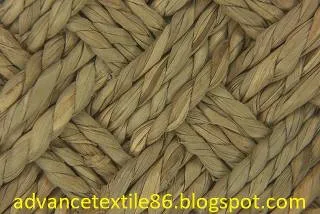Hemp
Hemp
is a variety of Cannabis sativa plant species that are grown specifically for
the industrial use of its products. It is one of the fastest-growing plants
and it had been one of the primary plants spun into usable fibers 50,000
years ago. It can be modified into various commercial items including paper,
textiles, clothing, biodegradable plastics, paints, insulation, biofuels, food,
and animal feed.
Hemp
features a lower concentration of THC and a better concentration of cannabidiol
(CBD), which reduces or eliminates its psychological effects. Some governments
control the concentration of THC and only allow hemp that is bred with a
particularly low THC content.
History of hemp fiber
Hemp
is probably one of the earliest trees to be cultivated for fiber production. An
archaeological site in the Oki Islands near Japan has had cannabis achenes from
about 8000 BC, probably indicating the use of the plant. Archaeologically, the
use of hemp dates back to the Neolithic period in China, and hemp fiber has
been found in Yang Shao culture pottery since the 5th millennium BC. Later the
Chinese used hemp to make early forms of clothing, shoes, rope, and paper. The
classical Greek historian Herodotus (480 BC) said that the inhabitants of
Scythia often breathed in the smoke of hemp seeds for breathing and their own
pleasurable entertainment.
Hemp
has been born for millennia for Asian and Middle Eastern fibers. Commercial
production of hemp in the West began in the eighteenth century but was grown in
the East of England in the sixteenth century. Due to the colonial and naval
expansion of the age, economies needed large quantities of hemp for ropes and
oakum. In the early 1940s, world production of hemp fiber ranged from 250,000
to 350,000 metric tons, with Russia being the largest producer.
Hemp fiber-producing countries
The
world's leading producer of hemp is China, they are producing more than 70% of
the world's output. France is in second place with around a quarter of the world's
production. Small production occurs in Europe, Chile, and therefore the remainder of North Korea. Other countries that are producing hemp industrially
are including Australia, Austria, Canada, Chile, China, India, Italy, Japan,
Denmark, Egypt, Finland, Spain, Sweden, Switzerland, Germany, Greece, Hungary,
Korea, Netherlands, New Zealand, Poland, Portugal, Romania, Russia, Slovenia,
Thailand, Turkey, UK, and Ukraine.
Properties of hemp
1.
Hemp is bast or plant fiber.
2.
It is three-time stronger than cotton
3.
Its fiber color is yellow to brown
4.
Its elastic recovery is very less.
5.
Moisture regain is 12%.
6.
It has excellent heat resistance.
7.
Its lustrous is very good.
8.
it’s attacked by hot dilute acid or cold concentrated acid.
9.
It's good resistance to alkali.
10.
Its dye affinity is very poor.
11. The hand feel is not good.
12.
The organic solvent doesn’t affect hemp fiber.
13.
It has good abrasion resistance and durable fiber.
Cultivation and processing of hemp
In the southern hemisphere, hemp is usually planted between September and
November, and between March and May in the northern hemisphere. Its maturity time
is around three to four months. Selective breeding millennia results from the spread of species that exhibit different characteristics; Suitable for specific
environments/latitudes, closely associated with long, slender plants with long
fibers, making different combinations of different ratios and terpenoids and
cannabinoids, fiber quality, oil/seed yield, etc. as a result.
Hurd
and bast fiber Separation is known as decortication. Usually, before the
stalks of the shell are first watered before being crushed from the inner base
by hand, this process is known as scutching. With the development of mechanical
technology, the fiber was separated from the original by crushing the rollers
and brush rollers, or by hammer-milling, in which a mechanical hammer process
was applied to the hemp as opposed to a screen to prevent dust from falling
through small enclosure fibers and screens. Hit by. After the marijuana tax law
came into force in 1938, the technology to separate fibers from the original
remained "frozen in time." Recently, new high-speed kinematic
descriptions have emerged, capable of separating hemp into three strands; bast,
hurd, and green microfiber.
Uses of hemp
1.
Hemp is mainly used as a textile fiber.
2.
Its seeds are used as food for animals and birds.
3.
Its seeds are an entire protein and a source of iron.
4.
Its oil is used as oil-based paint, moisturizing cream, cooking, and plastic
making.
5.
Its fiber is used with other fibers for making blended textiles and furnishing.
6.
Its fiber is used as rope, canvas, fabric, etc., and other products.
7.
The hemp used with lime makes insulating materials.
8.
Its pulp is used in the paper industry for paper making.
9.
It is used in making jewelry products like a bracelet, necklaces, anklets, and
other ornaments.
10.
It can be used as a mop crop for purifying wastewater.










0 Comments